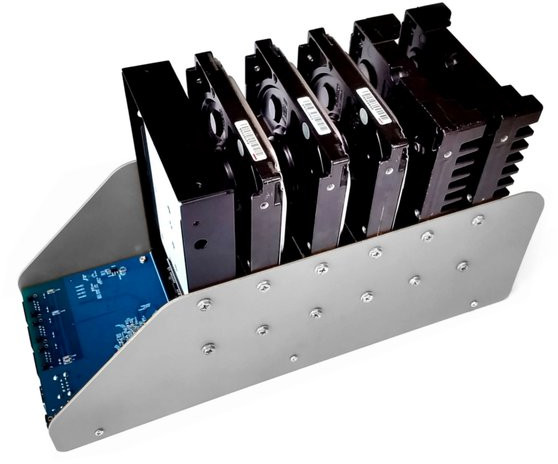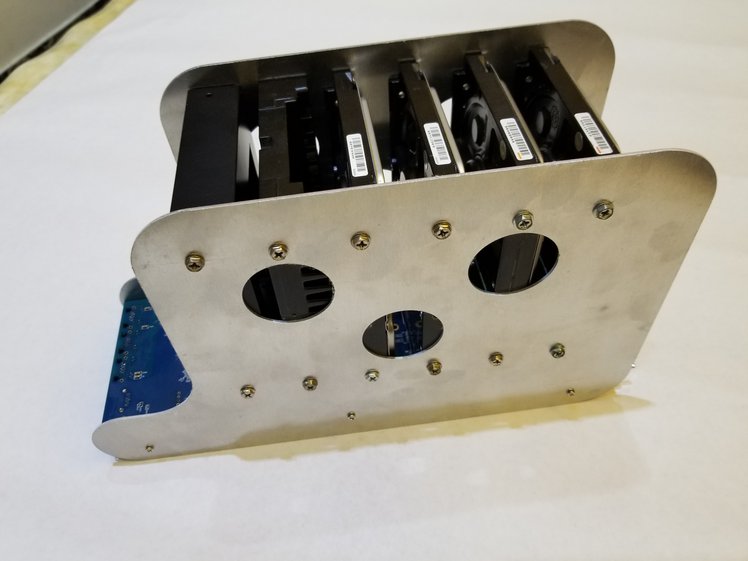
Quoting the campaign on CrowdSupply: A low-cost, low-power NAS for 3.5" drive
This is some sort of an open enclosure combined with a PCB based on a MIPS MediaTek SoC with 3 GbE ports and 3 ASM106x SATA controllers hanging off a dedicated PCIe lane each so in theory a pretty decent setup to access up to 6 SATA disks. Unfortunately I've not seen any reasonable benchmark numbers so far using this SoC accessing more than one disk in parallel (all I've came accross were single disk benchmarks with slow 2.5" HDD or these pretty low numbers from Mqmaker's WiTi board -- but as we know without some tweaks slow ARM or MIPS SoCs won't perform well as OMV/NAS boxes anyway).
Some thoughts/considerations as usual on CNX: GB-PC2 as well as the older 2.5" variant (check especially the comments section)
While I really love the idea behind (creating a NAS relying only on FLOSS components) I don't understand the implementation (obviously only outdated kernels available, loading a binary firmware recommended and since this device needs Debian mipsel architecture you're dependent on such a repo for OMV too). Since GNUBee folks advertise OMV capabilities they might comment here?
Anyway: it feels kinda bizarre assuming that a MIPS based NAS thingie couldn't be the right choice in 2017 given that almost all the customers 2 decades ago that had really large storage setups were running on MIPS (SGI servers with IRIX and XFS which wasn't available anywhere else back then) and that the most beautiful UNIX box I ever had running also felt pretty fast wrt storage back then ![]()



